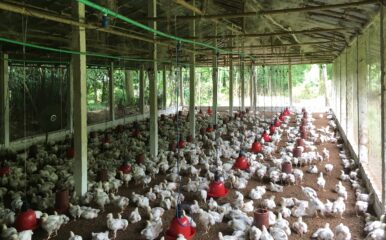
Keeping your chicken meat and eggs safe to enjoy
Published on 07/06/2024

JK Sloan/Unsplash
Poultry-based products comprise a significant portion of the global food supply. Yet they present considerable food safety challenges due to microbiological, chemical and physical hazards. Farmers, traders and marketers are able to deploy many strategies to mitigate these hazards across various stages of the farm-to-fork chain.
Through advanced detection methodologies, refining and processing techniques, and adherence to rigorous regulatory standards at every stage and in every operation in the supply chain, the poultry industry can significantly enhance food safety, protect public health and provide good quality protein and micronutrients important for good health.
Microbial hazards
Poultry products face high contamination risks from microbial hazards at various stages of farm-to-fork operations and effective measures must be implemented at the farm level to prevent contamination by pathogenic microorganisms. Decreasing risk starts with proper husbandry practices in both layer bird and broiler operations. For layer birds, encouraging egg laying in nest boxes rather than on the floor reduces microbial contamination. Other recommended practices include frequent egg collection, providing litter materials in nest boxes and regular disinfection of nest boxes. Such practices enhance the safety of fresh eggs and egg-based products.
Effective vaccination programmes and rigorous biosecurity practices, including rodent control, are also essential in animal management to prevent zoonotic diseases such as avian influenza, campylobacteriosis, colibacillosis, salmonellosis, erysipelas, avian tuberculosis and Newcastle disease.
To minimise microbiological contamination during the value chain, a cold chain must be strictly maintained during storage and transportation, with fresh chicken stored at or below 4.44°C and frozen chicken at -18°C. Chicken meat must then reach an internal temperature of at least 73.89°C during cooking to eliminate harmful bacteria such as Salmonella and Clostridium perfringens. Maintaining hygienic practices and ensuring sanitation in broiler chicken meat processing is essential to prevent contamination with harmful micro-organisms. There are similar stringent standards that must be maintained for safe eggs.
Chemical hazards
Chemical hazards may enter the farm-to-fork chain at several points. In feed processing, poor-quality feed ingredients can introduce mycotoxins into poultry products. Mycotoxins are naturally occurring chemicals than can be produced by some fungi but they present a serious health risk to both people and livestock. To guard against mycotoxins, producers must ensure they use high-quality formulated feed by selecting suitable feed ingredients and additives, maintaining optimal processing conditions (including conditioning, pelleting, and heat treatments) and ensuring proper packaging and storage of feed ingredients.
Adhering to withdrawal periods – the time that must elapse between the last administration of a medicine and the slaughter of birds – is crucial, particularly for broiler meat. Additionally, judicial use of sodium nitrate (a common preservative) in meat-based processed products is needed to prevent residues in the final food products.
Physical hazards
Physical hazards can also contaminate poultry products and producers need to minimise the unintentional addition of foreign materials such as sand, dust, insects and other debris into poultry-based products. Effective packaging is crucial too to minimise physical contamination.
Ensuring public health during farm-to-fork operations is challenging as there are so many potential hazards at the various stages. Mechanisms must be in place to trace and communicate these hazards promptly.
Systems such as the Rapid Alert System for Food and Feed (RASFF) and traceability systems promote real-time information sharing among governmental and non-governmental authorities, producers, distributors, customers, and consumers. By facilitating efficient hazard management and risk mitigation, the RASFF significantly enhances public health protection. Coupled with traceability systems, authorities can track the origin and movement of hazards throughout the farm-to-fork process, ensuring swift and accurate responses to food safety issues.
All these holistic approaches improve the safety and quality of poultry-based foods, maximising their nutritional benefits for consumers. In particular, interdisciplinary collaboration, especially among veterinarians, medical and public health officials, environmental scientists, local and provincial government authorities and local communities, is crucial for effective control and prevention of disease. Adopting a holistic One Health approach and integrating it into local and national strategies ensures public health and food security, mitigating health hazards associated with poultry products.


